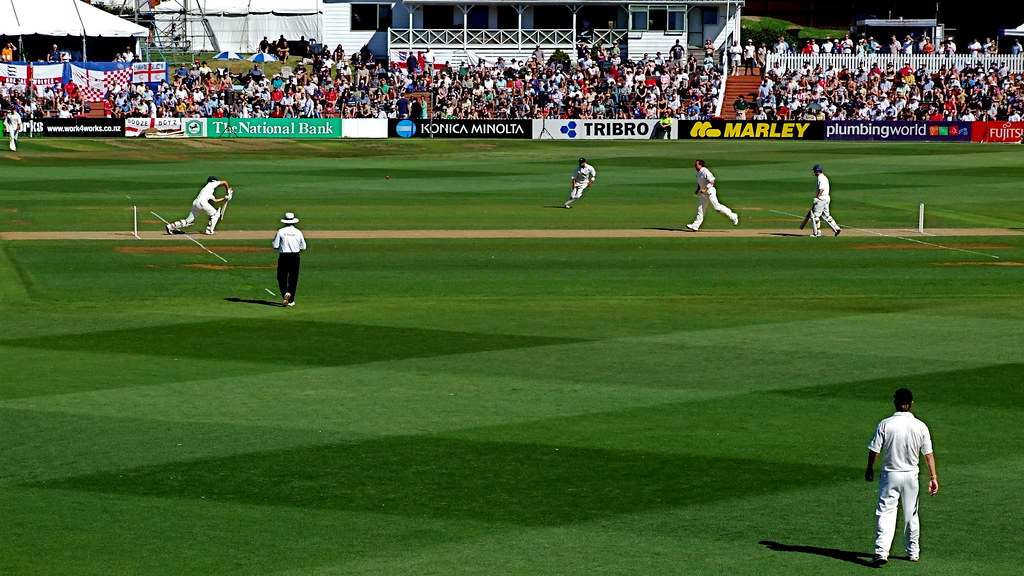Since Brendon McCullum lit up the opening night of the Indian Premier League (IPL) in 2008 with 158 off 73 balls, the cricketing fraternity have been fearing for the future of the longest format of the game.
Over the past 12 years there has been a decline in interest and attendances for Test cricket around the world. Players have consistently trotted out the same tired quotes: “Test cricket is the best form of the game”, “Test cricket is the pinnacle”, “Winning Test matches is what I am here for” … and so on.
But, for some, their actions have suggested something different. If English players really thought the game played in whites, was the pinnacle, then they would spend the spring at Fenner’s in front of 100 people, not Eden Gardens in front of 68,000. There is no better preparation for a summer of Test cricket in England than playing red-ball cricket on a seaming pitch against a bowler moving the ball sideways. Blasting white balls into the hands of thousands of adoring Indians, however, is not.
Back in 2017 Tony Irish, the head of the International Player’s Union (FICA), said: “More and more, particularly in smaller countries, players are finding T20 competitions more attractive than playing for their country.”
I don’t begrudge the players this – the bright lights of the IPL and the paycheque that comes with it are hard to ignore. You only have to look at the upturn in performances in the England white-ball teams, to see the benefits high-level franchise cricket can have.
Only really in England have we seen consistently packed stadiums for Test matches over the past 12 years. In 2014, the first Test between England and Pakistan in the UAE was watched by just 54 people. Irish said: “Test cricket is very healthy in England, you still fill up the grounds and it’s still the pinnacle of the game. That’s not how it is in the rest of the world.”
In an attempt to apply context to even the deadest of dead rubber games, the World Test Championship has been created. This confusing system, where different games get different points, might be working, but who knows? Only real cricket aficionados seem to care about how the table is stacking up. New Zealand are top, in case you were wondering. The final is set for June this year at Lord’s; if that takes place and a champion is found, the tournament should start to take on more meaning.
Part of the reason that the Test Championship was created was because were teams struggling to compete away from home. Out of the past 30 Test series, only six have been won by the away side, with the home team taking 22. This lack of competition has been dragging Test cricket down. It is incredibly rare for teams to go to Australia and England and win a series. As for winning in India? Forget it.
But now, with England’s series win in Sri Lanka and India’s triumph over Australia, the trend might have started to reverse. More competitive Test series are what the game is crying out for. The recent contest between India and Australia was dubbed by many as the best series since the Ashes of 2005. In the first Test, India were bowled out for a humiliating 36, and with captain and best batsman Virat Kohli flying home, things looked more than bleak for the tourists. But by the end of the fourth Test, they had fought back to win the series 2-1 despite fielding a shoestring pace attack, that few pundits had heard of.
Last week, England were basking in the joy of a victory on Indian soil. In the past 10 years India have lost just four Test matches at home, three of which have been at the hands of England. This week, England crashed to a humiliating defeat. Why? Because the groundstaff prepared a pitch that turned more than the carousel at your local country fete.
Maybe, the International Cricket Council (ICC) should have a committee for pitch inspection to try to make sure all pitches around the world are kept to a similar standard.
Home advantage remains a big part of cricket though. Unlike football, where pitches are roughly the same size, the grass is roughly the same length, and it is the fans that make the real difference. The challenges posed by in playing different parts of the world is one of the essential charms of cricket. It is what makes the game unique. From Chennai to Cape Town, from Melbourne to Manchester, the games will be completely different. The make-up of the sides will change as well. Different teams, for different needs.
T20 and one-day cricket aren’t going anywhere, there can be little doubt about that, and elements of them are having a positive effect on the Test game. Just look at Ben Stokes’s iconic 135 not out at Headingly in the 2019 Ashes. That wouldn’t have been possible without the skills he developed playing white-ball cricket. Lawrence Booth, editor of Wisden Cricketers’ Almanack, said: “That win might never have happened without the limited-overs game.”
The threat posed by white-ball cricket is real – we cannot deny that – but with its 150th birthday just six years away the oldest game is fighting back.
By Alex Brinton

